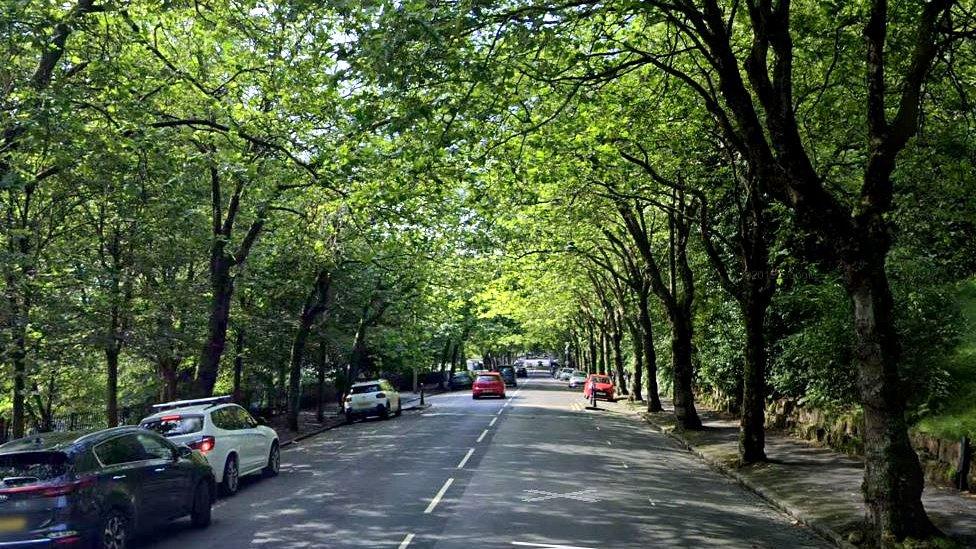Glasgow considers 'one-way system' for shopping streets
- Published
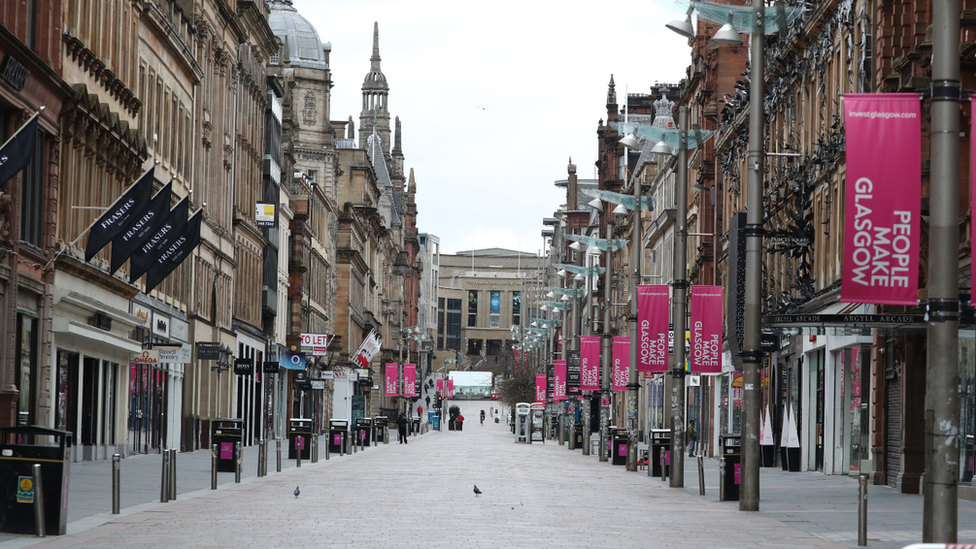
Buchanan Street could be transformed by a "one-way system" keeping shoppers in lanes
Signs to encourage pedestrians to walk on one side of the road could be introduced on Scotland's busiest shopping streets.
Glasgow City Council is working on plans which could see them temporarily put in place on Buchanan Street and other city centre pedestrian precincts.
The idea is to encourage walkers to stay on the left hand side of the street as far as possible.
The system would reassure pedestrians and make social distancing easier.
A similar idea is already in place in Cardiff City Centre.
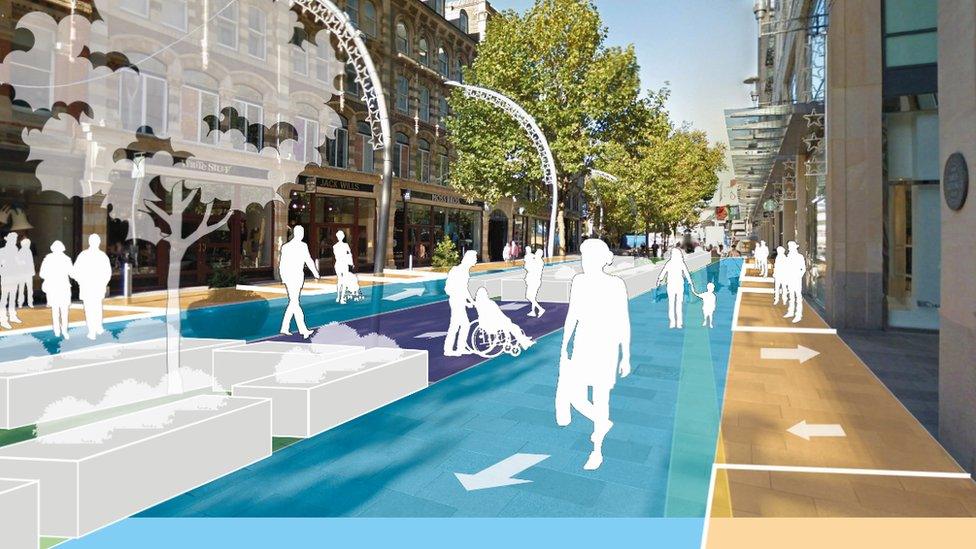
A similar idea is now in place in a shopping area in Cardiff
By directing the flow of pedestrians, it could be easier to get around and maintain social distancing: people would not be trying to move out of the way of someone approaching or stopping to let them go past.
Council officers are still working on the details of the scheme which is still at an early stage but say the measures will be in place "as quickly as possible".
Council leader, Susan Aitken told the BBC it was all about making spaces for people and that some of the measures could remain permanent if people wanted that.
She said: "It's all about safety its all about people looking out for each other, behaving in a way that maximises that opportunity for social distancing and that makes sure that we are not encroaching on each other's space as much as possible.
"As our local economies open back up and particularly with busy streets like Buchanan Street and Argyle Street it will be more challenging for people to remain physically distanced, so if we can help them in any way at all to make that easier we are willing to give it a try and see how it works out."
She said the most important thing was to guard against a resurgence of Covid.
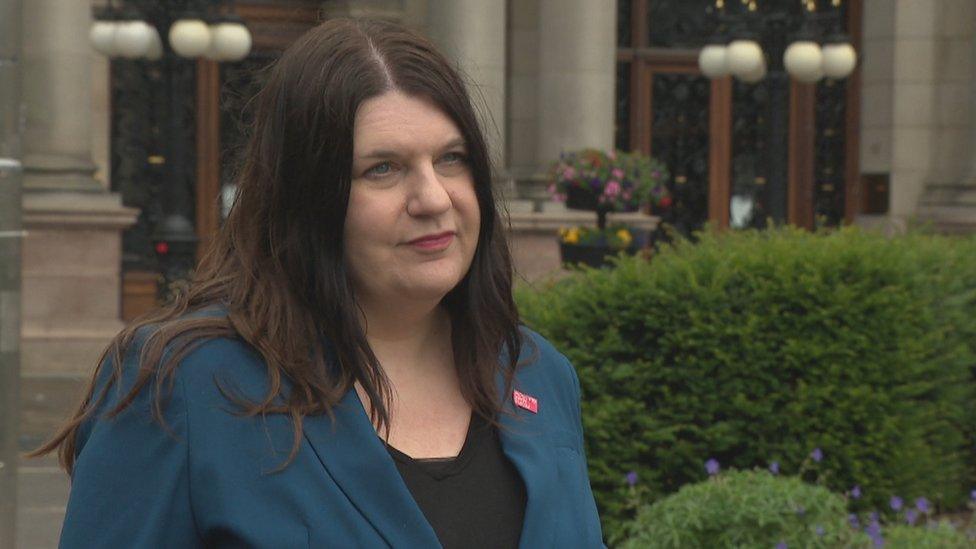
Council leader, Susan Aitken said she would listen to residents about what they wanted to see in their neighbourhoods
Ewan Macdonald Russell from the Scottish retail Consortium said: "Every city, every town centre is going to have to come up with different approaches that suit their space, that work with transport links and where people are coming from.
"Contraflow might be the right thing for Glasgow but it is absolutely right they are looking and exploring these options and working out what is going to work best for high streets so we can all shop safely with confidence."
Non-essential shops in Scotland reopened on Monday and shopping centres should fully reopen in a fortnight.
On Monday and Tuesday there were significant queues outside a few shops - notably Primark in Argyle Street where the queue stretched round the corner.
Social distancing means queues are longer: partly because of restrictions on the number who can go inside a shop and partly because the people queuing are trying to stay apart.
First Minister Nicola Sturgeon is expected to speak about social distancing and whether it may be relaxed later this week.
Retail plays a vital role in Glasgow's economy - the city centre has been cited by some as the best shopping area in the UK outside London.
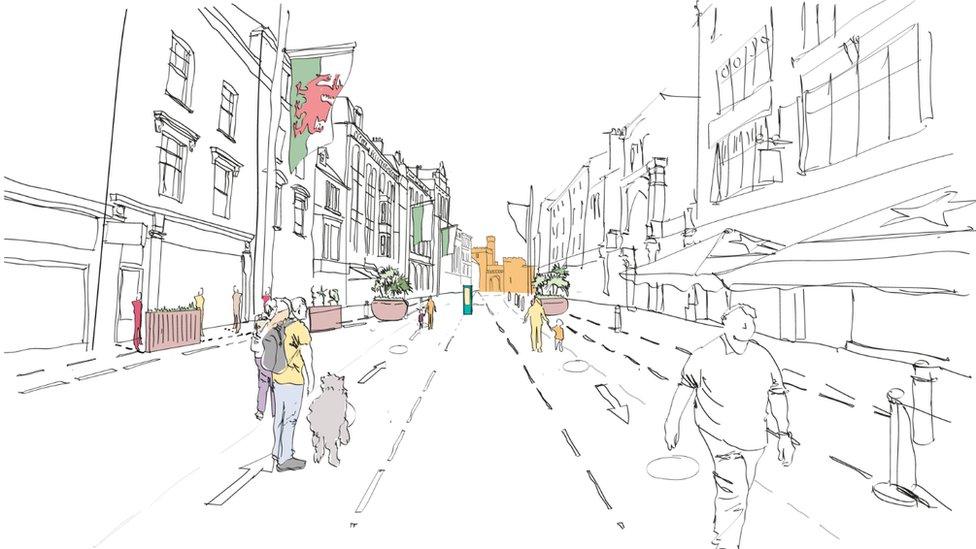
A one way system on St Mary Street in Cardiff
Retailers and the council hope that by making the shopping areas seem as safe and welcoming as possible, customers will continue to return and there would be less risk of the pandemic causing lasting harm to the city's retailers and the city centre itself.
Nationally, there is concern that the past three months will add to the decline of traditional shopping areas. Some retailers have closed, some shoppers have gone online and there is a worry that fears of a lasting economic downturn will put people off spending.
The proposals for "directed traffic" on pedestrian streets would complement other moves taken in the city to help maintain social distancing.
The council has introduced additional cycle lanes temporarily and cut the number of parking spaces.
Any signs to direct pedestrians would only be there until restrictions on social distancing were removed.
- Published29 June 2020

- Published5 June 2020

- Published2 May 2020
